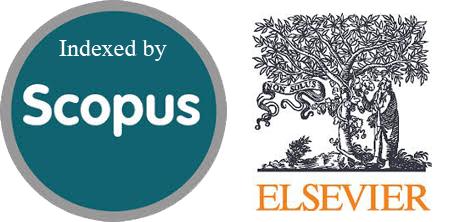The Role of Contrast-Enhanced MRI in Differentiation Between Recurrent Breast Cancer and Benign Post-Operative Lesions
DOI:
https://doi.org/10.54133/ajms.v8i2.1883Keywords:
Breast contrast-enhanced MRI, Accuracy, Benign postoperative changes, Recurrent breast cancerAbstract
Background: Magnetic resonance imaging (MRI) is highly sensitive to detect clinically suspected lesions that mammography and sonography may miss. However, routine postoperative MRI surveillance is not recommended unless there is concerning clinical or radiological evidence. Objective: To evaluate the role of MRI in assessing postoperative breast lesions and distinguishing benign changes from recurrence. Methods: This prospective cohort analysis was conducted at the National Center for Early Detection of Breast Cancer, Oncology Teaching Hospital, Medical City, from January 2022 to August 2022. The study enrolled breast cancer patients who had undergone breast-conserving surgery (BCS) or mastectomy within the past 24 months and were currently under radiological surveillance or presented with a new clinically detected mass. Results: A total of 42 lesions from 32 patients were analyzed; 21(65.7%) were under routine follow-up, while 11(34.3%) presented with a new mass. Mammography and/or ultrasound detected 36(85.7%) lesions, while MRI identified six (14.3%) additional lesions. Histopathology confirmed malignancy in 22(68.2%) patients. Five of six MRI-discovered lesions were malignant in histology, with a mean diameter of 7.5mm, ranging from 6-11mm. Irregular shape, speculated margin, heterogeneous enhancement, and diffusion restrictions were significantly associated with malignancy. Using histopathology as the gold standard, MRI demonstrated 100% sensitivity, 55% specificity, and 78.6% accuracy. Conclusions: Dynamic contrast-enhanced MRI can improve the characterization of postoperative breast lesions. This method can help minimize benign lesion biopsies and detect recurring malignancies and multifocality when traditional imaging fails.
Downloads
References
Sung H, Ferlay J, Siegel RL, Laversanne M, Soerjomataram I, Jemal A, et al. Global Cancer Statistics 2020: GLOBOCAN estimates of incidence and mortality worldwide for 36 cancers in 185 countries. CA Cancer J Clin. 2021;71(3):209-249. doi: 10.3322/caac.21660. DOI: https://doi.org/10.3322/caac.21660
Gao P, Kong X, Song Y, Song Y, Fang Y, Ouyang H, et al. Recent progress for the techniques of MRI-guided breast interventions and their applications on surgical strategy. J Cancer. 2020;11(16):4671-4682. doi: 10.7150/jca.46329. DOI: https://doi.org/10.7150/jca.46329
Sopik V, Lim D, Sun P, Narod SA. Prognosis after local recurrence in patients with early-stage breast cancer treated without chemotherapy. Curr Oncol. 2023;30(4):3829-3844. doi: 10.3390/curroncol30040290. DOI: https://doi.org/10.3390/curroncol30040290
Sad LMAEA, Dabees NL, Mohamed DAE, Tageldin A, Younis SG. Assessment of suspected breast lesions in early-stage triple-negative breast cancer during follow-up after breast-conserving surgery using multiparametric MRI. Int J Breast Cancer. 2022;2022:4299920. doi: 10.1155/2022/4299920. DOI: https://doi.org/10.1155/2022/4299920
Gweon HM, Son EJ, Youk JH, Kim JA, Chung J. Value of the US BI-RADS final assessment following mastectomy: BI-RADS 4 and 5 lesions. Acta Radiol. 2012;53(3):255-260. doi: 10.1258/ar.2011.110597. DOI: https://doi.org/10.1258/ar.2011.110597
El-Adalany MA, Emad EL. Role of dynamic contrast enhanced MRI in evaluation of post-operative breast lesions. Egypt J Radiol Nuclear Med. 2016;47:631-640. doi: 10.1016/j.ejrnm.2016.02.003. DOI: https://doi.org/10.1016/j.ejrnm.2016.02.003
American College of Radiology, B.I.R.C., ACR BI-RADS atlas: breast imaging reporting and data system, (5th ed.), 2013, Reston, VA: American College of Radiology.
Devon RK, Rosen MA, Mies C, Orel SG. Breast reconstruction with a transverse rectus abdominis myocutaneous flap: spectrum of normal and abnormal MR imaging findings. Radiographics. 2004;24(5):1287-1299. doi: 10.1148/rg.245035734. DOI: https://doi.org/10.1148/rg.245035734
Kim H, Ko EY, Kim KE, Kim MK, Choi JS, Ko ES, et al. Assessment of enhancement kinetics improves the specificity of abbreviated breast MRI: Performance in an enriched cohort. Diagnostics (Basel). 2023;13(10):1713. doi: 10.3390/diagnostics13101713. DOI: https://doi.org/10.3390/diagnostics13101713
Ertekin E, Türkdoğan FT. The contribution and histopathological correlation of MRI in BI-RADS category 4 solid lesions detected by ultrasonography. J Surg Med. 2021;5:439-443. doi: 10.28982/josam.865402. DOI: https://doi.org/10.28982/josam.865402
Park SY, Han BK, Ko ES, Ko EY, Cho EY. Additional lesions seen in magnetic resonance imaging of breast cancer patients: the role of second-look ultrasound and imaging-guided interventions. Ultrasonography. 2019;38(1):76-82. doi: 10.14366/usg.18002. DOI: https://doi.org/10.14366/usg.18002
Steinhof-Radwańska K, Lorek A, Holecki M, Barczyk-Gutkowska A, Grażyńska A, Szczudło-Chraścina J, et al. Multifocality and multicentrality in breast cancer: Comparison of the efficiency of mammography, contrast-enhanced spectral mammography, and magnetic resonance imaging in a group of patients with primarily operable breast cancer. Curr Oncol. 2021;28(5):4016-4030. doi: 10.3390/curroncol28050341. DOI: https://doi.org/10.3390/curroncol28050341
Iacconi C, Galman L, Zheng J, Sacchini V, Sutton EJ, Dershaw D, et al. Multicentric cancer detected at breast MR imaging and not at mammography: Important or not? Radiology. 2016;279(2):378-384. doi: 10.1148/radiol.2015150796. DOI: https://doi.org/10.1148/radiol.2015150796
Radhakrishna S, Agarwal S, Parikh PM, Kaur K, Panwar S, Sharma S, et al. Role of magnetic resonance imaging in breast cancer management. South Asian J Cancer. 2018;7(2):69-71. doi: 10.4103/sajc.sajc_104_18. DOI: https://doi.org/10.4103/sajc.sajc_104_18
Liu G, Li Y, Chen SL, Chen Q. Non-mass enhancement breast lesions: MRI findings and associations with malignancy. Ann Transl Med. 2022;10(6):357. doi: 10.21037/atm-22-503. DOI: https://doi.org/10.21037/atm-22-503
Aydin H. The MRI characteristics of non-mass enhancement lesions of the breast: associations with malignancy. Br J Radiol. 2019;92(1096):20180464. doi: 10.1259/bjr.20180464. DOI: https://doi.org/10.1259/bjr.20180464
Ahmadinejad N, Azizinik F, Khosravi P, Torabi A, Mohajeri A, Arian A. Evaluation of features in probably benign and malignant nonmass enhancement in breast MRI. Int J Breast Cancer. 2024;2024:6661849. doi: 10.1155/2024/6661849. DOI: https://doi.org/10.1155/2024/6661849
Abd Kadhim M, Abd-Alhassan UM. Value of dynamic contrast-enhanced magnetic resonant imaging in detection of local recurrence breast cancer. Iraqi Postgrad Med J. 2022;21:46-54. doi: 10.52573/ipmj.2021.174070.
Drukteinis JS, Gombos EC, Raza S, Chikarmane SA, Swami A, Birdwell RL. MR imaging assessment of the breast after breast conservation therapy: distinguishing benign from malignant lesions. Radiographics. 2012;32(1):219-234. doi: 10.1148/rg.321115016. DOI: https://doi.org/10.1148/rg.321115016

Downloads
Published
How to Cite
Issue
Section
License
Copyright (c) 2025 Al-Rafidain Journal of Medical Sciences ( ISSN 2789-3219 )

This work is licensed under a Creative Commons Attribution-NonCommercial-ShareAlike 4.0 International License.
Published by Al-Rafidain University College. This is an open access journal issued under the CC BY-NC-SA 4.0 license (https://creativecommons.org/licenses/by-nc-sa/4.0/).











